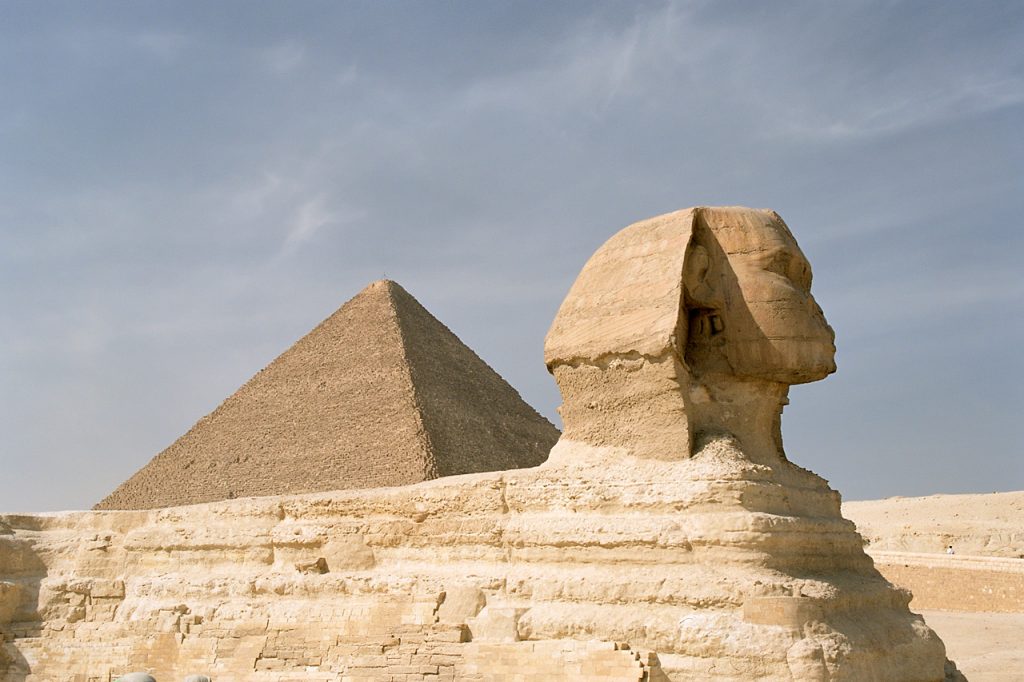
The magnificent Temple of Queen Hatshepsut, located beneath the steep cliffs at Deir el Bahari on the west bank of the Nile is considered as one of the incomparable monuments of ancient Egypt. It was built in honour of the Pharaoh Queen of Egypt and is today known as the Temple of Deir El-Bahri (Arabic) meaning “The Temple of the Northern Monastery”.
Image Source – https://upload.wikimedia.org/wikipedia/commons/4/43/Deir_el-Bahari_0489.JPG
The remarkable feature of this renowned monument is its design which is in harmony with its natural surroundings. Far from being belittled by the massive rock face behind, the cliffs form a magnificent backdrop to this unique structure.
This Temple was built as a result of the inspiration of Queen Hatshepsut – the Queen who would be King.
Queen Hatshepsut – The Enigmatic Personality
There is an interesting story to the enigmatic personality that Queen Hatshepsut was.

Image Source – https://upload.wikimedia.org/wikipedia/commons/6/64/Head_of_a_Sphinx_of_Hatshepsut.jpg
She was the daughter of Queen Ahmose and Thutmose I, the third Pharaoh. She had two brothers and a sister. Unfortunately, her siblings died before Thutmose I did, leaving Hatshepsut as the only child to succeed her father as Pharaoh. However, being a female, she was prohibited from doing so.

Image Source – https://upload.wikimedia.org/wikipedia/commons/4/46/Statue_of_Thutmose_I.jpg
Mutnofret, son of Thutmose I from a wife of the royal harem, succeeded him as Thutmose II. Subsequently, Hatshepsut was married to her half-brother, Thutmose II. After about 13 years on the throne, Thutmose II died unexpectedly and, since they had no son, the crown passed on to Thutmose III, a son born in the royal harem. Thutmose III was still an infant, and as his mother was not considered sufficiently royal to act as his regent, Queen Hatshepsut was called upon to do so. She acted as a regent for seven years and later crowned herself as the King of Egypt.

Hatshepsut did not let the fact that she was a woman stand in her way as the ruler of Egypt. She wore the badges of kingship – a royal shirt and ceremonial beard. She presided over a prosperous Egypt for more than two decades.
Queen Hatshepsut died in the 22nd year of her reign. Before she died, she had two tombs built for herself. The first was in the Valley of the Kings and the second, after she became Pharaoh, was in the Taker Zeid Valley, south of Deir el Bahri and overlooking the Valley of the Kings. Strangely her body was found in neither. Whether she was poisoned so that Thutmose III might take over the throne or stabbed by her lover or killed by jealous officials or died a natural death still remains a mystery.
And the tales go on.
The Temple of Deir El-Bahri – A grand design unparalleled and unsurpassed
The Temple of Deir El-Bahri is one of the most characteristic temples in the whole of Egypt. It was built of limestone, not sandstone, like most of the other funerary temples.
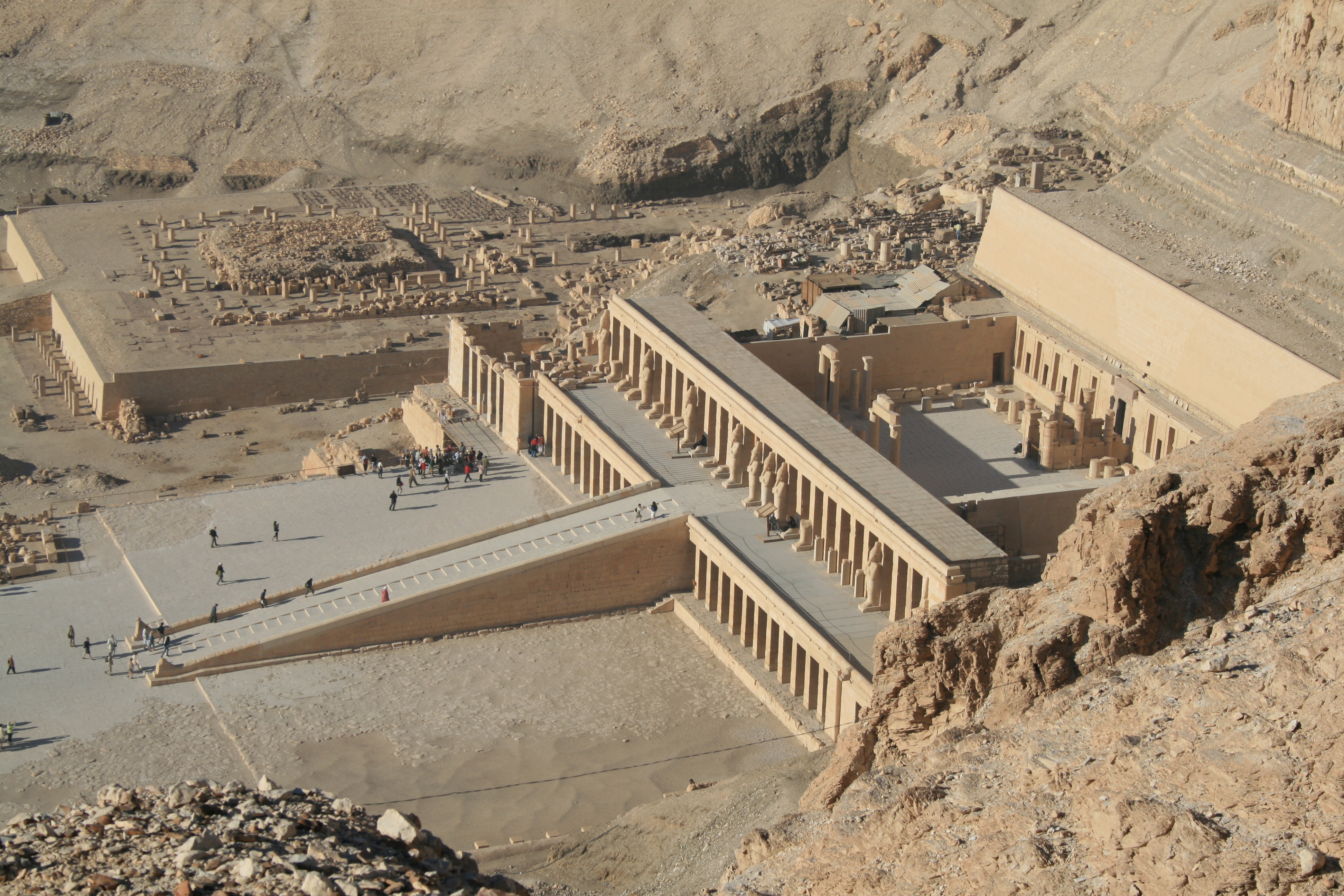
Image Source – https://upload.wikimedia.org/wikipedia/commons/f/f3/Temple_hatchepsout.jpg
Deir el-Bahari was a multi-functional temple which took 15 years to complete. It consisted of three imposing terraces linked by ascending ramps bounded by limestone walls. The temple complex consisted of a series of shrines and chapels devoted to a variety of gods. The main sanctuary was dedicated to Amun, the highest of the gods. A suite of chapels was devoted to the royal ancestors. An open-air court was dedicated to the worship of the sun god Re-Herakhty.
One level below the main sanctuary are two chapels – one dedicated to Anubis, the god of embalming, and the other to Hathor, the goddess of Deir el-Bahari bay.
There are two famous colonnades on the upper terrace. On the left is the Colonnade of the Expedition to Punt (Somalia). On the right is the Birth Colonnade. The Punt Colonnade commemorates an expedition ordered by Queen Hatshepsut to the Land of Punt to bring back myrrh and incense trees. The Birth Colonnade was constructed to dispel any apprehension about Hatshepsut’s right to the throne.
The Temple of Hatshepsut is indeed a monument of colossal proportions which is both imposing and awe-inspiring.
Sculptures and Paintings – A Vivid Tale of Divine Devotion

Image Source – https://upload.wikimedia.org/wikipedia/commons/c/cb/Statue_of_Horus_in_Hatshepsut_Temple_%28detail%29_-_July_2007.jpg
The Temple of Hatshepsut is proliferated with statues and sphinxes and recites the tale of the divine birth of a female pharaoh and the exploits of her soldiers on a trading mission to the land of Punt.
Queen Hatshepsut’s semi-divine nature is highlighted on the walls of her temple where a sequence of images and accompanying text tell the story of her divine birth. In one of the scenes, you can see Queen Ahmose, mother of Hatshepsut, sitting in her boudoir where Amon, the god of Thebes visited her. The God tells her that she has been chosen to bear his daughter, the future King of Egypt. Another scene depicts heaven where Queen Hatshepsut is born.
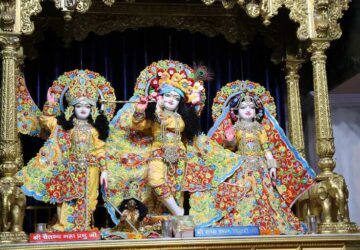
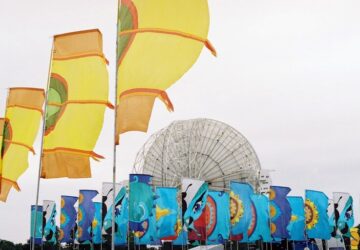

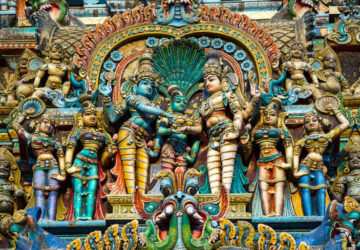
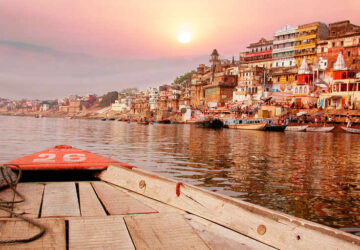
Related Post
Famous Temples and Heritage Sites in Ayodhya, Uttar Pradesh
10 Famous Street Foods of Mumbai
Mount Abu: Rajasthan’s Summer Capital
15 Best Honeymoon Destinations in India in May (2024)
Get Acquainted with the Unmingled Marine life of Andamans
Your Go-To Travel Guide For Andaman Adventure Activities & Food
6 Reasons Andaman Is The Ideal Work-From-Beach Destination
Places to visit in India during long weekends 2024
Ten Interesting Facts About Serbia
15 Best Places to Visit in Serbia